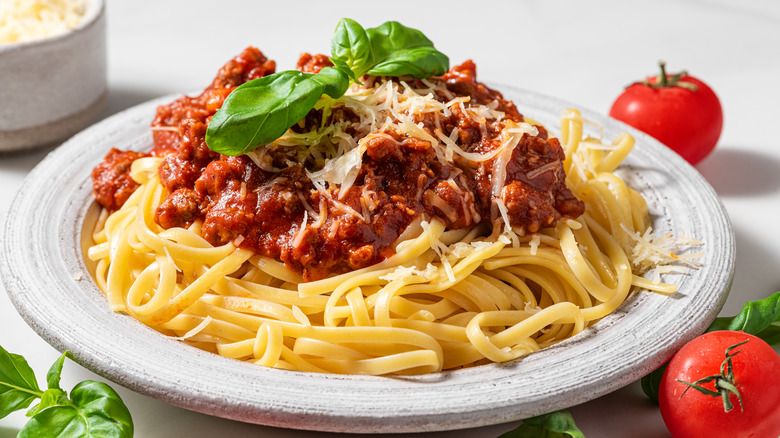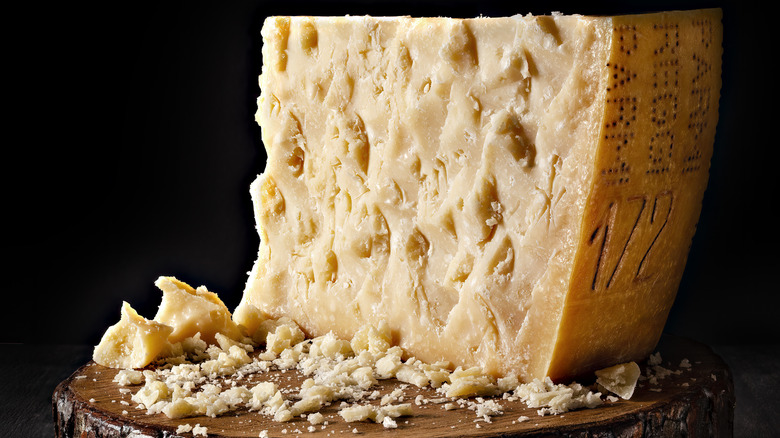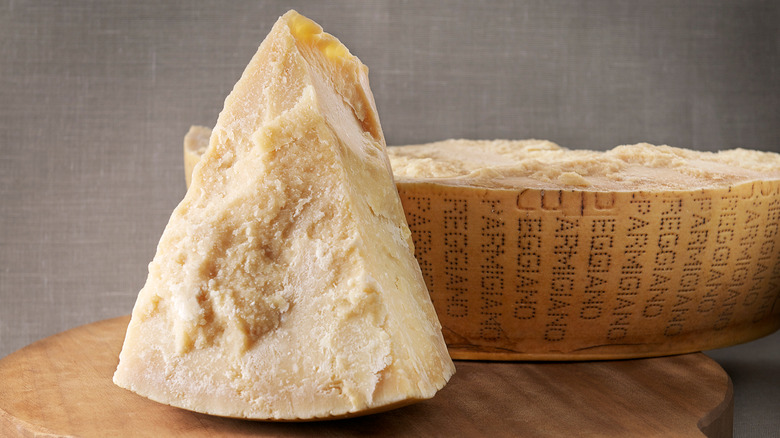What's The Difference Between Parmesan And Parmigiano Reggiano?
Ah, the perfect plate of spaghetti! It's a quick meal, but it can taste like you spent hours on it. There are many ways to enjoy this classic Italian dish, but the key to a great plate of spaghetti is using fresh, high-quality ingredients.
Start with good quality spaghetti pasta, and look for fresh, ripe tomatoes, fragrant herbs, and high-quality olive oil to make a truly spectacular homemade sauce. Of course, you can always buy your favorite sauce to make the meal much faster and easier.
Pair your plate of spaghetti with a great glass of wine or homemade tea, and add a side salad and some garlic bread to the plate for a true feast. No pasta dish is truly done until it is finished with some (or a lot of) cheese, but which do you use– Parmesan or Parmigiano Reggiano cheese? Is there a difference between the two, and which is best for your plate of spaghetti?
The subtle, but big, differences between Parmesan and Parmigiano Reggiano
Parmesan and Parmigiano Reggiano are hard, aged Italian cheeses with similar textures and flavors. Parmigiano Reggiano is made from raw cow's milk, which is then aged for at least 12 months, and sometimes as long as three years. The cheese has a nutty, slightly salty flavor.
On the other hand, Parmesan can be made from various types of cow's milk, including whole and skim, and is often aged 6 to 12 months. It has a similar flavor and texture to Parmigiano Reggiano but is generally milder. Both are grated to go over pasta, soups, and salads or even eaten by the handfuls when you have a late-night cheese craving.
The fundamental difference between the two, however, is that Parmigiano Reggiano is a Protected Designation of Origin cheese, meaning that it can only be produced in certain regions of Italy. In contrast, Parmesan can be produced anywhere in the world. While both kinds of cheese are delicious and can be used in similar ways, Parmigiano Reggiano is considered higher quality and more expensive due to its strict production requirements.
How to use Parmesan and Parmigiano Reggiano
Because Parmesan and Parmigiano Reggiano are similar in flavor, you can use them both the same way. Parmigiano Reggiano does tend to have a more robust, more complex flavor than other Parmesan cheeses, though, and it also tends to be more expensive. You should keep this in mind when choosing between the two types of cheese for your pasta. If you are okay with the extra cost, Parmigiano Reggiano is worth it, especially if you want to add an authentic Italian flavor.
If you want a cheaper alternative, Parmesan cheese can also be a topping for pasta dishes, such as spaghetti or a classic lasagna. If you like a stronger taste, you may need to use more Parmesan cheese than you would Parmigiano Reggiano, and fresh Parmesan will have a bolder flavor than the Parmesan cheese product that you get from a can.


